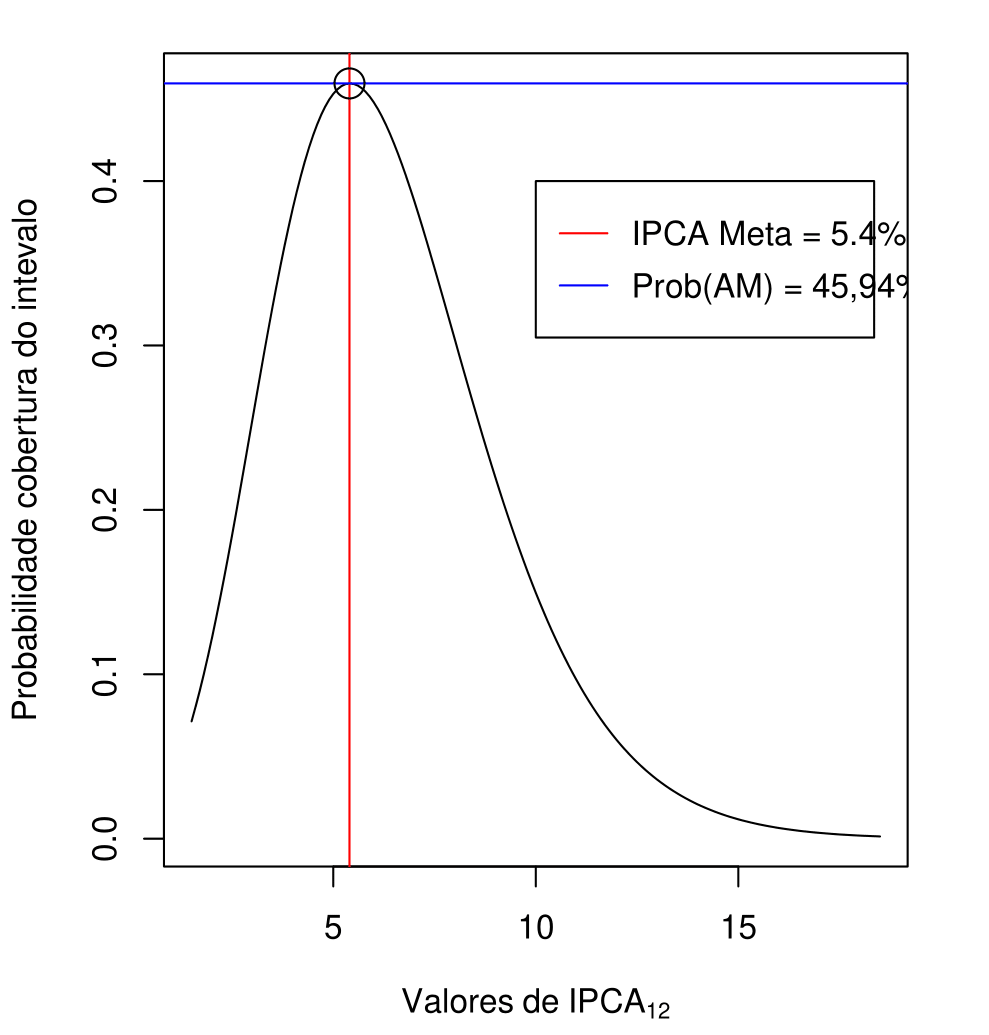Probabilistic modeling of the IPCA12 index
Keywords:
Asymmetry, kurtosis, maximum likelihoodAbstract
The objective of this work was to fit a distribution to the IPCA12 dataset and estimate the probability of this index remaining within the confidence limits established by the Central Bank of Brazil for year 2024, which are 3% +- 1.5%. To choose between the log-normal, Gamma, and Weibull distributions, Kolmogorov-Smirnov test, and the Akaike Information Criterion (AIC) were analyzed. The Gamma model with parameters alfa 5.81 and beta 1.09 was selected, and it was estimated that the probability of the true value of IPCA staying within the confidence interval established by the Central Bank for the year 2024 would be 25.45%. Furthermore, maintaining a margin of +- 1.5%, it was possible to conclude that the IPCA value or target that would maximize coverage of the range should be 5.4% instead of 3%. More specifically: P(5.4% - 1.5% <= IPCA12 <= 5.4% + 1.5%) = 45.94%.
References
AKAIKE, H. A new look at the statistical model identification. IEEE Transactions on
Automatic Control, Notre Dame, v. 19, n. 6, p. 717-723, 1974.
BARROS, R. P. de; NERI, M. M., R. Pobreza e inflação no Brasil: Uma análise agregada.
Economia Brasileira em Perspectiva. Rio de Janeiro: IPEA, vol 1, 1996. 838 p.
CONOVER, W. J. Practical Nonparametric Statistical. John Wiley & Sons Inc., New York,
p.
DELFIM NETTO, A. Sobre as metas inflacionárias. Revista de Economia Aplicada, v. 3, n. 3,
EMILIANO, P. C.; VIVANCO, M. J. F.; MENEZES, F. S. Information criteria: How do they
behave in different models?. Computational Statistics & Data Analysis, v. 69, p. 141-153, 2014.
FERREIRA, T. P.; FIGUEIREDO F. M. R. Os preços administrados e a inflação no Brasil.
Banco Central do Brasil Trabalhos para Discussão, n. 59, Brasília, dez. 2002.
FERREIRA, T.P.; PETRASSI,M. B. S. Regime de metas de inflação: resenha sobre a
experiência internacional. Banco Central do Brasil. Notas Técnicas, no 30, Brasília, nov., 2002.
MARSAGLIA G., TSANG W. W., WANG J. Evaluating Kolmogorov’s distribution. Journal of
Statistical Software, v. 8, n. 18, 2003.
MILLER, R. B. Maximum likelihood estimation and inference: with examples in R, SAS, and
ADMB. 1. ed. [S.l.]: Wiley, 2011.
MOOD, A. M.; GRAYBILL, F. A.; BOES, D. C. Introduction to the theory of statistics.
Singapore: McGraw-Hill, 1974. 564 p.
R CORE TEAM. R: a language and environment for statistical computing. R Foundation for
Statistical Computing, Vienna, Austria. 2023.

Downloads
Published
How to Cite
Issue
Section
License
Proposta de Política para Periódicos de Acesso Livre
Autores que publicam nesta revista concordam com os seguintes termos:
- Autores mantém os direitos autorais e concedem à revista o direito de primeira publicação, com o trabalho simultaneamente licenciado sob a Licença Creative Commons Attribution que permite o compartilhamento do trabalho com reconhecimento da autoria e publicação inicial nesta revista.
- Autores têm autorização para assumir contratos adicionais separadamente, para distribuição não-exclusiva da versão do trabalho publicada nesta revista (ex.: publicar em repositório institucional ou como capítulo de livro), com reconhecimento de autoria e publicação inicial nesta revista.
- Autores têm permissão e são estimulados a publicar e distribuir seu trabalho online (ex.: em repositórios institucionais ou na sua página pessoal) a qualquer ponto antes ou durante o processo editorial, já que isso pode gerar alterações produtivas, bem como aumentar o impacto e a citação do trabalho publicado (Veja O Efeito do Acesso Livre).
